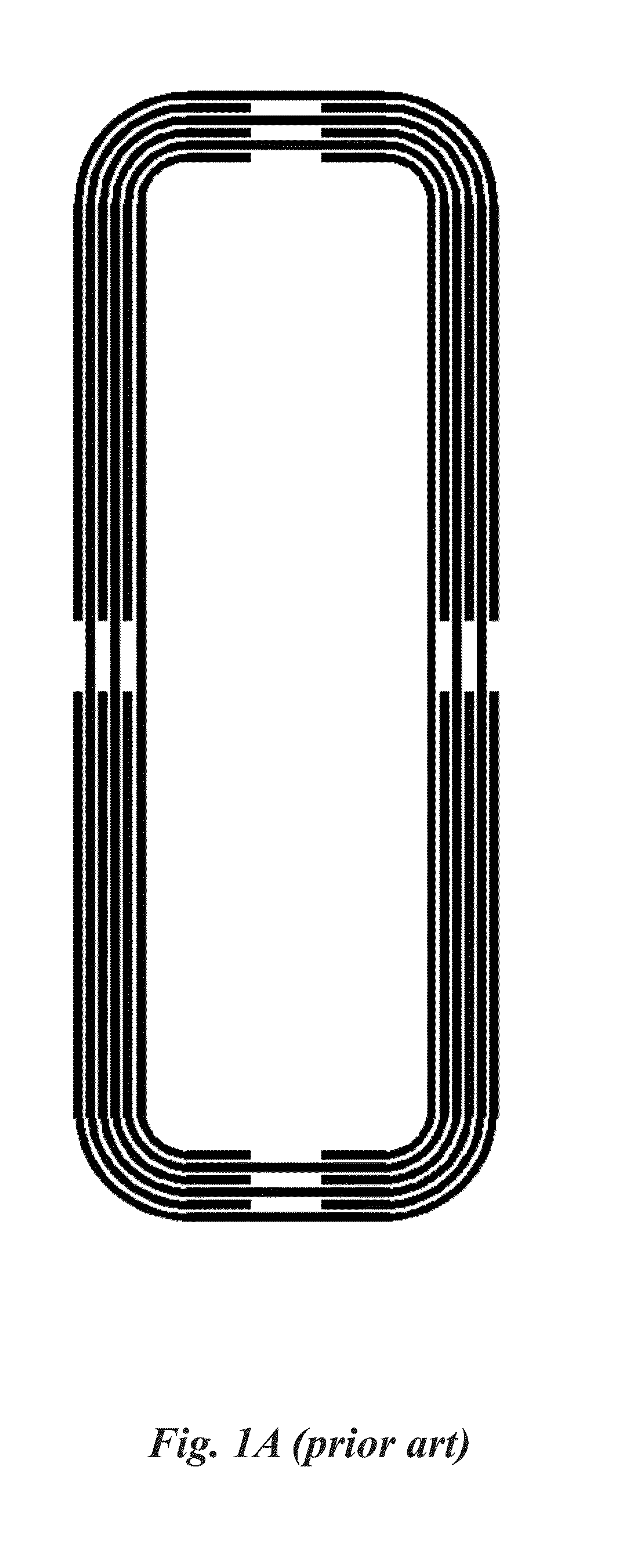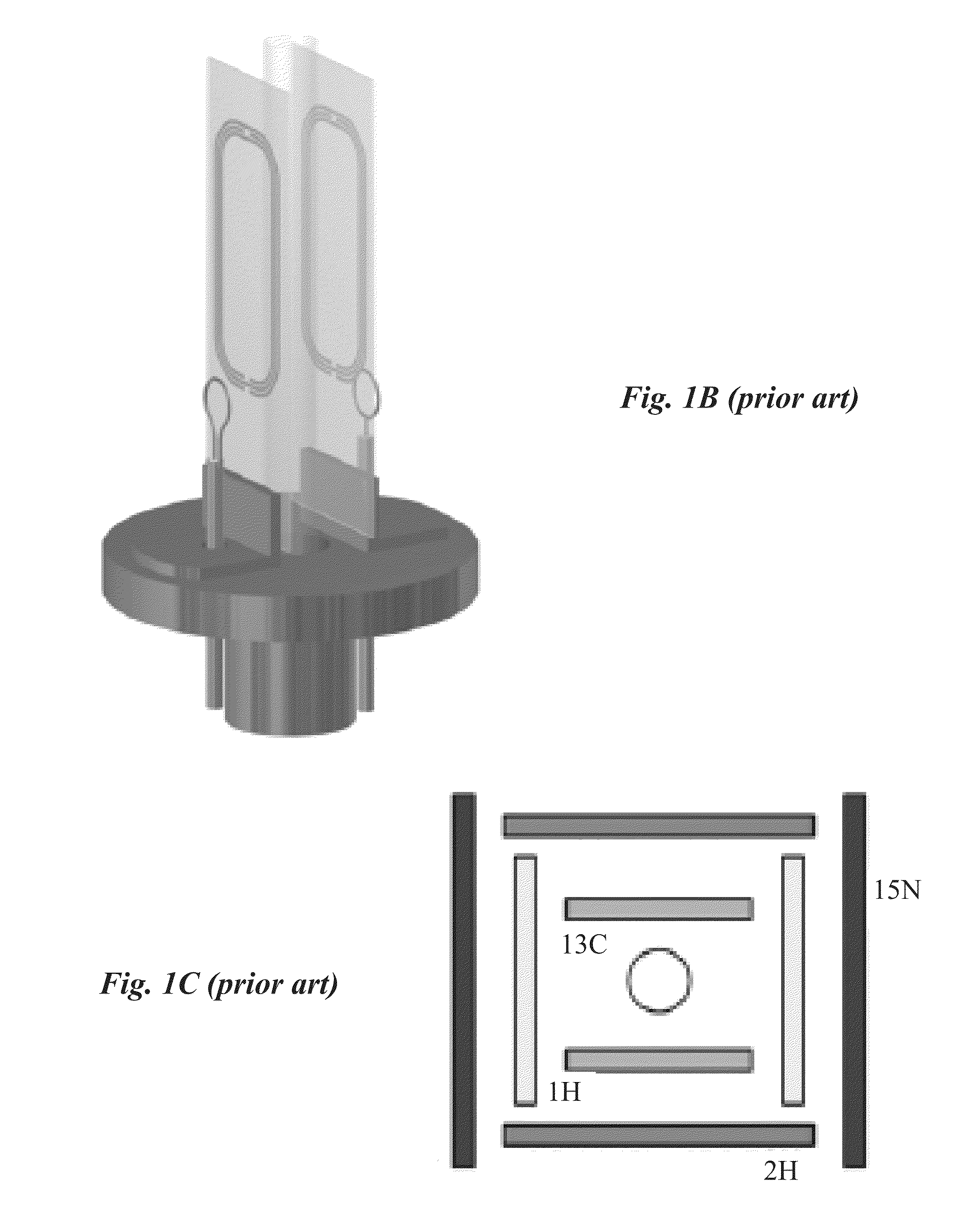NMR RF probe coil exhibiting double resonance
a technology of rf probe and double resonance, which is applied in the field of radiofrequency (re) transmitreceive coils, can solve the problems of low sensitivity, major bottleneck in natural product discovery, and the inefficient rate of optimizing the sensitivity of the probe at only one channel
- Summary
- Abstract
- Description
- Claims
- Application Information
AI Technical Summary
Benefits of technology
Problems solved by technology
Method used
Image
Examples
example 1
[0071]FIGS. 2A and 2B illustrate an embodiment of the current invention, a 13C-1H coil generally denoted by the reference numeral 11, where coil structures 10, 14 are placed on opposite sides of one dielectric substrate. Exemplary coil 11 would be appropriate to use as the inner coil pair in an NMR probe designed for detection of both 13C and 11H isotopes. In this embodiment, a dielectric substrate (not shown) separates two superconductive films patterned into self-resonant coil structures 10, 14. Two such films are disposed around a cylindrical sample as in the prior art to produce a uniform RF magnetic field across the sample. The long axis of coil 11 would be oriented along the field axis of the solenoidal NMR magnet.
[0072]The aspect of coil 11 distal to the sample can be seen in FIG. 2A and is patterned into spiral coil structure 10. Spiral coil structure 10 produces a field that is substantially perpendicular to the plane of the dielectric substrate. Spiral coil structure 10 is...
example 2
[0077]FIG. 3 illustrates another embodiment of the current invention, a 15N-2H coil generally denoted by the reference numeral 21, where the coil structures 22, 24 are positioned on the same side of one dielectric substrate and one coil is placed within the other coil. Exemplary coil 21 would be appropriate to use as the outer coil pair in an NMR probe designed for decoupling on the 15N channel and for engaging a 2H field frequency lock. In this embodiment, both self-resonant coil structures 22, 24 are patterned on the same side of the dielectric substrate, thereby eliminating the two-sided patterning of the HTS coils.
[0078]The longitudinal axis of coil 21 would be oriented along the field axis of the solenoidal NMR magnet. Coil 21 includes figure-8 coil structure 22 tuned to the 2H frequency and spiral coil structure 24 tuned to the 15N frequency. The magnetic field in the sample region at the spiral coil structure resonance frequency is substantially perpendicular to the dielectri...
PUM
| Property | Measurement | Unit |
|---|---|---|
| angle | aaaaa | aaaaa |
| nuclear magnetic resonance probe | aaaaa | aaaaa |
| magnetic field | aaaaa | aaaaa |
Abstract
Description
Claims
Application Information
 Login to View More
Login to View More - R&D
- Intellectual Property
- Life Sciences
- Materials
- Tech Scout
- Unparalleled Data Quality
- Higher Quality Content
- 60% Fewer Hallucinations
Browse by: Latest US Patents, China's latest patents, Technical Efficacy Thesaurus, Application Domain, Technology Topic, Popular Technical Reports.
© 2025 PatSnap. All rights reserved.Legal|Privacy policy|Modern Slavery Act Transparency Statement|Sitemap|About US| Contact US: help@patsnap.com



